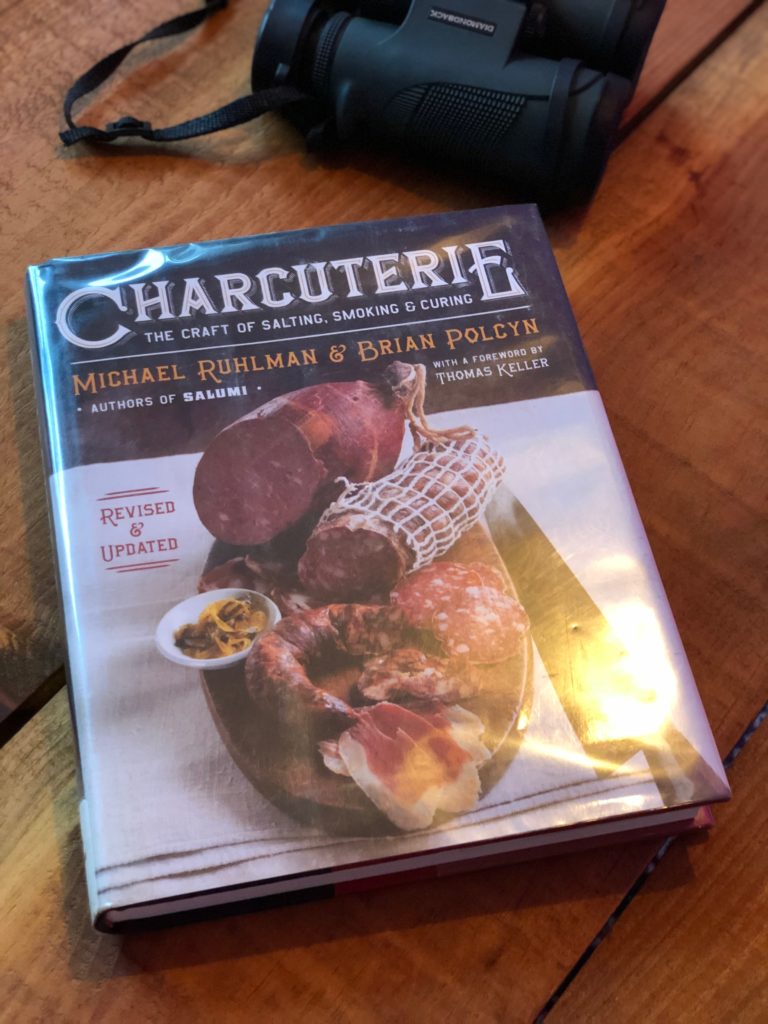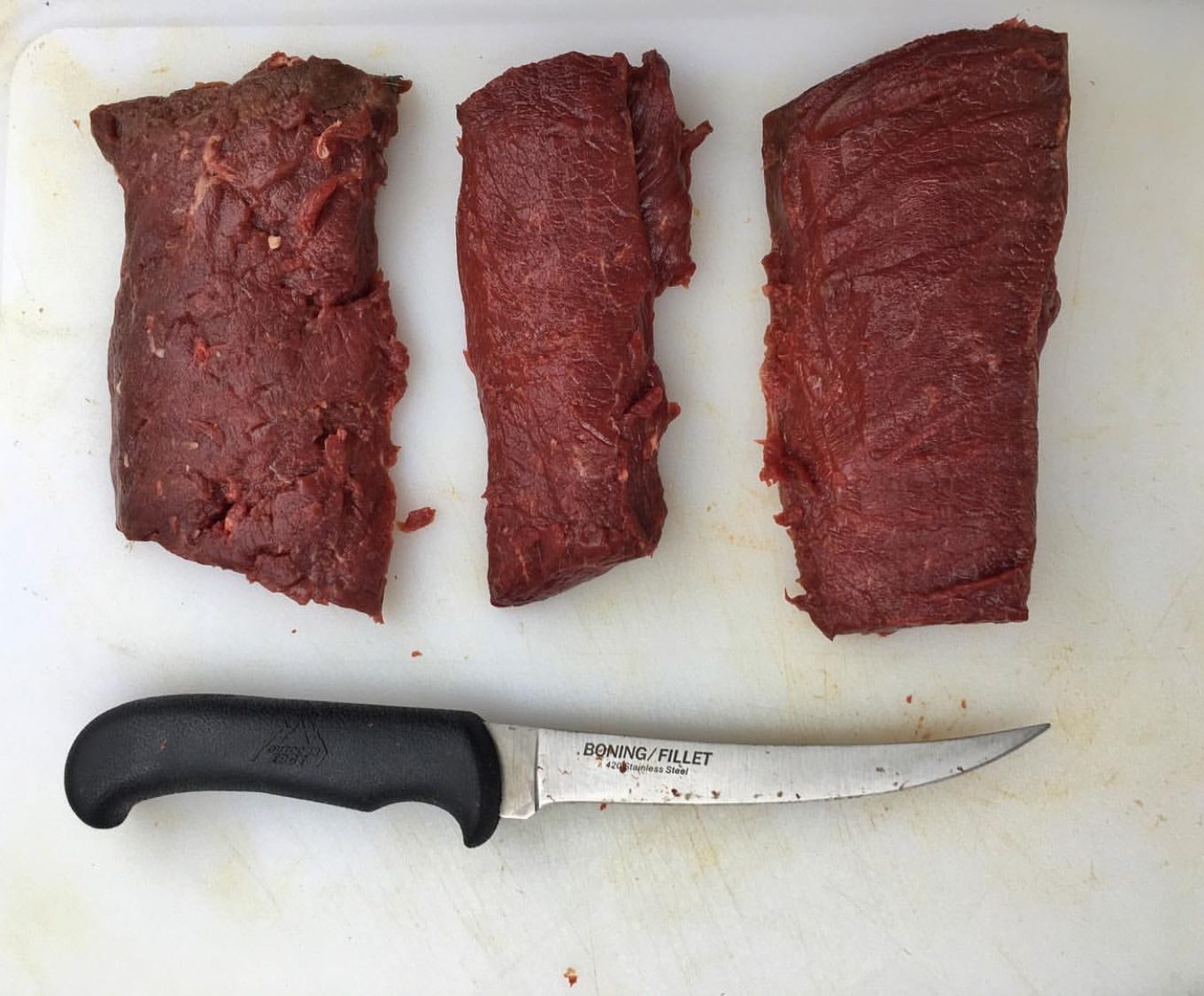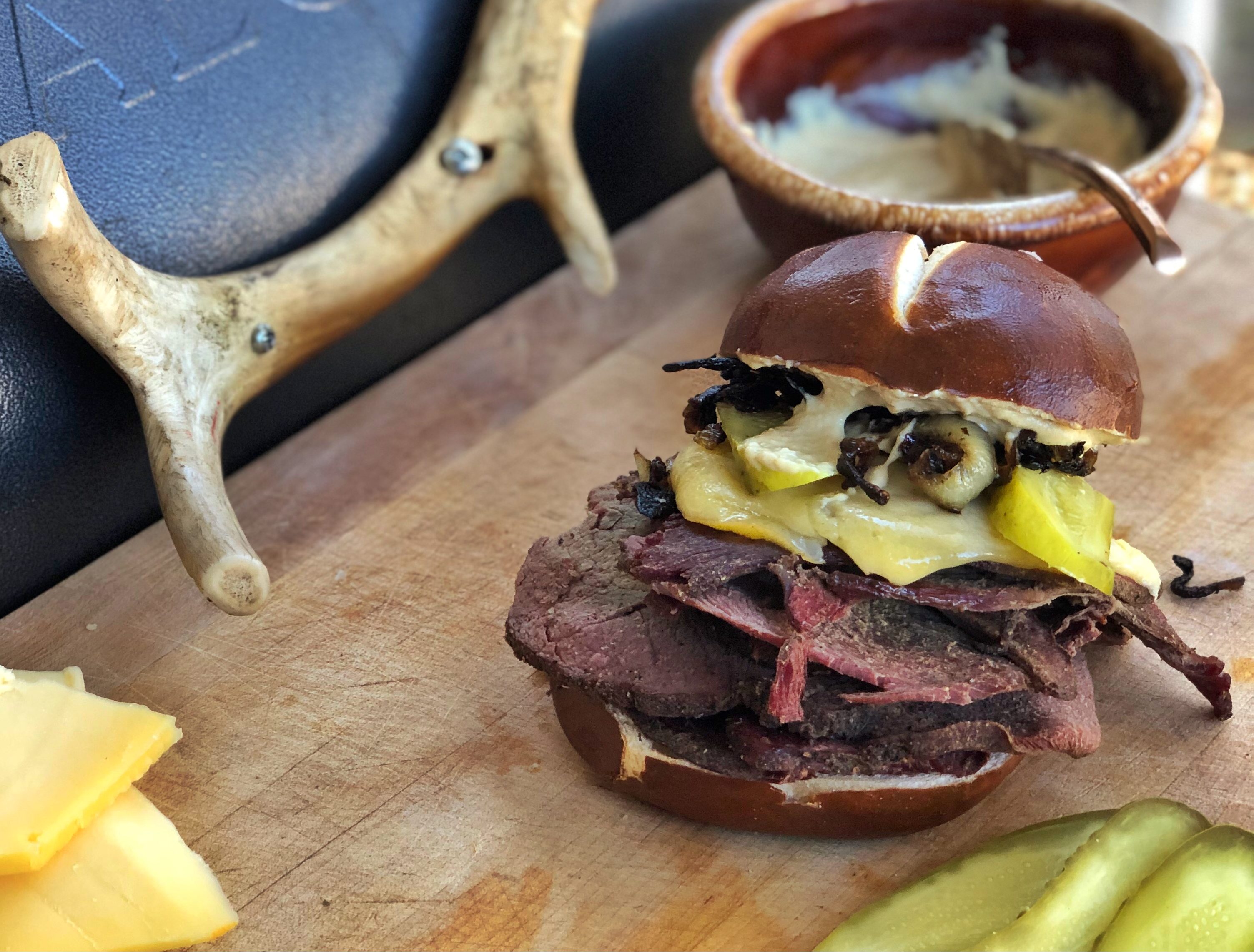
Loukaniko: A Recipe for Traditional Greek Sausage from Venison and Pork
I was working in a commercial kitchen when a fellow cook told me about his time in a butcher shop in Chicago several decades back. He said the owners, who were of Greek decent, made some great pork sausages (loukaniko) using orange zest and red wine. It sounded intriguing at the time so I filed the anecdote away and went about my business.
Fast forward a year or so later and I finally have the equipment needed to make a proper batch of sausage at home. As I was researching a good recipe, I recalled my previous coworker’s story about the orange zest and red wine sausage and turned to the internet to find out more.
What’s Loukaniko
I found out that the sausage my co-worker had made so many years ago was actually an ancient Greek variety called Loukaniko. The category has many variants, but recipes almost always call for some ratio of lamb and pork with orange zest, red wine and coriander for flavor.
Loukaniko Sausage Ingredients
In my batch of Loukaniko I added some leeks and threw in some cooked down opal apples I had on hand to give it my own twist. Instead of lamb, I used a 70:30 ratio of venison and pork—70 percent ground venison, 30 percent pork fat.
The result was a bright, almost floral sausage, with a flavor profile dominated by the toasted coriander and the orange zest. Make a big batch because it will go fast. This stuff is damn good.
Step 1. Grind The Meat
As I mentioned above, I went with a 70:30 ratio of ground venison and pork fat. I used pork fat because it’s what my local butcher had on hand at the time, but I suspect that pork shoulder would work just as well if not better, and you could definitely use wild hog if you have some. The amount of meat you use depends on the final yield you’re looking for. I used 4 lbs venison to 3 lbs pork for a total of 7lbs finished sausage.
When grinding meat, whether making sausage or just grinding up a batch of burger, it’s always good to start with cold grinder components ( I keep my grinder parts in the freezer when I’m not using them) and extremely cold, even partially frozen meat. It just expedites the process and makes the meat easier to work with.
Once you’re done grinding your venison and pork, set the mixture aside in the fridge. If storing in an open tupperware or lexan-type container, cover the meat with some cling film or saran wrap. Make sure the plastic wrap is pressed firmly against the meat and up against the sides of the container. This will prevent the meat from drying out while you prepare the rest of the ingredients.
Step 2: Prepare the other Ingredients.
As I mentioned before, there are many variations of Greek Loukinako, but the constants tend to be garlic, orange peel, coriander and red wine. I used all of the above with the addition of leeks, apples, peppercorns, dried thyme and dried oregano. I also toasted the coriander seeds in a sauté pan before grinding them. The specific spice mounts you use will depend on the final yield you’re looking for. For a 7 lb batch, I used the following:
Loukaniko Sausage Recipe
-
- 3 leaks, finely chopped with hard, darker leaves removed then cooked down in olive oil
-
- 3 opal apples, cooked down in olive oil
-
- 4 tablespoons kosher salt
-
- 1 tablespoon instacure no. 1 (optional)
-
- 1 and a half tablespoons toasted and freshly ground coriander
-
- 1 and a half tablespoons cracked black pepper
-
- 1 and half tablespoon crushed, dried oregano
-
- The freshly grated zest of three naval oranges
-
- 4 tablespoons minced garlic
- 1 cup ice cold red wine

Step 3: Mix Loukaniko Ingredients.
While it may seem rote, mixing is actually one of the most important steps in the sausage making process. Not only does it ensure that your flavor profile is uniform by distributing spices and other ingredients evenly, but it forms what experienced charcuterie makers call “the primary bind”. Sausage with a proper primary bind will hold together when cooked as opposed to crumbling and falling apart upon serving. You’ll know you’ve achieved a good primary bind if your sausage become sticky or tacky when you hold it between your fingers.
You will be greatly aided in this part of the sausage-making process if you own or have access to a standing mixer such as a Kitchen Aid. A good primary bind can be achieved with two minutes of slow speed mixing using the large paddle of a standing mixer.
For seven pounds, you will want to mix your sausage in batches unless you have access to a large, industrial mixer. Just make sure your spices are evenly dispersed into each batch. Once your spices, along with the cooked leeks, apples and orange zest, are thoroughly incorporated, slowly pour in your ice cold red wine.
If you’re doing this process by hand, use a wooden spoon and prepare for a bit of a workout. Stir, press and fold the meat and spices vigorously for at least a minute, then add your ice cold wine and continue to stir vigorously until the stickiness level of your mixture is indicative of a good primary bind. If you’re not worn out afterwards, you’re probably not mixing thoroughly enough.
Once you’ve mixed the sausage to your satisfaction, it’s time to get some tangible results. Form a patty with the sausage mix and cook it to doneness in a sauté pan lined with olive oil. If it tastes good, leave it alone. If it needs more flavor, add spices accordingly.
If this all sounds complicated, that’s because it is. Sausage making is a laborious and drawn out process that requires lots of time in the kitchen and a certain degree of culinary craftsmanship. If you really want to geek out on this and other type of charcuterie making, I highly recommend Micheal Rhulman’s eponymous treatise on the subject, Charcuterie: The Craft of Salting, Smoking, and Curing.

Step 4: Stuff Loukaniko Sausages.
Now comes the fun part, depending on your definition of fun I guess, but stuffing the sausage is definitely rewarding after the fact if not exactly loads of fun in the moment.
For these sausages it is important to use hog casings. Steer clear of lamb casings, as these will produce smaller links more reminiscent of breakfast sausage than traditional loukinakos. Before you begin stuffing, you’ll want to soak your casings in tepid water for at least 30 minutes if not longer.
The way you stuff your sausages will depend on the type of equipment you own or have access to. I’ve heard that proper sausage stuffers works best, but I used what I had—my meat grinder with a sausage funnel attachment.
Once your hog casings are thoroughly soaked, take them to the sink and run cold water through one end. Guide the water all the way through until it reaches the other end and exits the casing. This will open the casings up and prepare them for stuffing.
Now, tie off one end of your casing and insert the funnel into the other, running the hog casing it all the way up the funnel tube like a slinky, until you reach your knot. At this point, you may want to prick the casing with a sanitized needle to prevent air bubbles from forming inside once you begin stuffing the meat.

The size of your links is totally up to you. For this batch I did a few long coils as well as some 4-6 inch links. It depends on how you plan on serving your finished product. When tying off links, try to alternate the direction in which you twist each link. This will keep them from coming unraveled when you hang them in your fridge or smoker later on.
Step 5: Smoke Loukaniko Sausages.
Now that you’ve got your sausages stuffed and tied off, sit back and admire your craftsmanship. You’ve just participated in an ancient foodway, and in the process you’ve produced what Micheal Rhulman so eloquently describes as “a perfect package of seasonings and juiciness unequaled by any category of prepared food”.
One you’ve soaked it all in, it’s time to smoke these bad boys. I did mine on a Traeger pellet grill on the smoke setting to an internal temp of 150 degrees. You could also use andelectric smoker, or just cook them over a charcoal grill or in a medium heat skillet, but I love the extra depth of flavor that the Traeger provides.
After smoking, you can serve them as is, or refrigerate or freeze some for later. When re-serving the pre-smoked sausages I like to heat them in a sauté pan until the outside is browned and crispy.

Enjoy!





